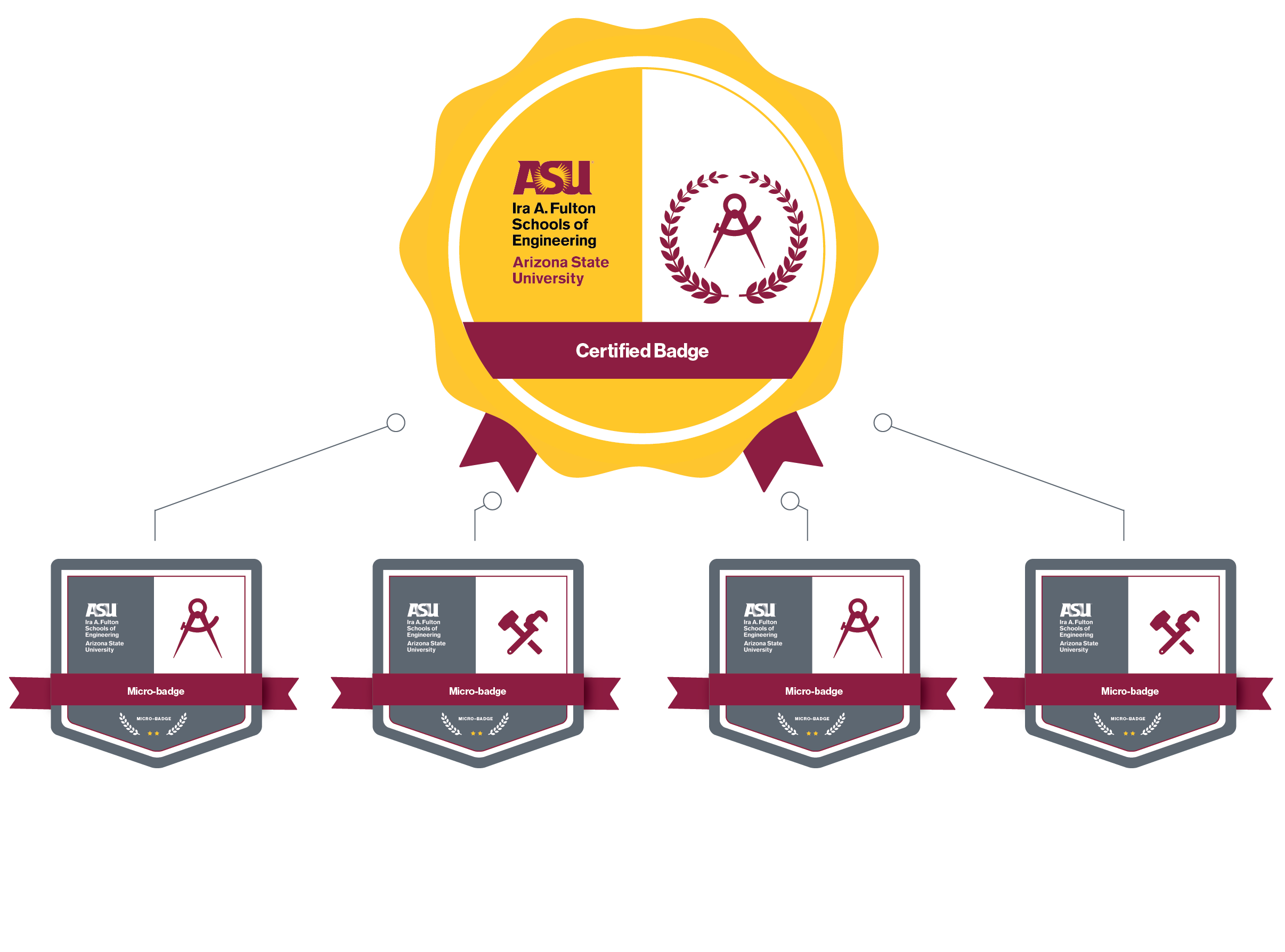Microcredential Development Process
Microcredentials are developed across four phases. Each phase is completed collaboratively with the Instructor, the GOEE Team, and the Domain Expert. The time needed for each phase varies based on the complexity of the microcredential, idea readiness and alignment, and audience demand. Typically takes 2-6 months before implementation.
Get Started—Schedule Now
Phase 1: Ideation and Approval
The instructor submits a microcredential proposal which is reviewed by a domain expert and assessed for industry demand. Typically takes 2–5 weeks.
- Meet with the GOEE Team to discuss Microcredential Structure
- The instructor completes Badge Overview Form
- Domain Expert reviews proposal and provides feedback
- The GOEE Team conducts market research
Phase 2: Design and Planning
The instructor collaborates with the GOEE Team and Domain Expert to design the microcredential including logistics, assessments, and instructional methods. Typically takes 3–10 weeks.
- Hold a Kickoff Meeting to discuss expectations and logistics
- Set course dates and finalize agreements
- Complete the Micro-badge Planning Form to outline content, structure, and assessments.
Phase 3: Content Development and Marketing
The instructor develops all course materials and prepares the Microcredential in Canvas. GOEE develops marketing collateral. Typically takes 4–16 weeks.
- The instructor creates lecture materials, activities, and assessments.
- The GOEE Team reviews material to ensure alignment with FSE and the Microcredential standards
- The GOEE Team develops flyers, landing pages, and registration information
- Marketing material is distributed through available channels by the GOEE Team and the instructor.
Phase 4: Implementation & Evaluation (Launch & Post-Course)
Deliver the microcredential, award digital credentials, and gather feedback for continuous improvement. Typical time is determined by the structure of the microcredential.
- Launch the microcredential in synchronous, asynchronous, or hybrid format
- Award digital credential upon completion of the microcredential
- Identify and document opportunities for improvements of future offerings based on feedback from learners, the instructor, and the GOEE Team.

